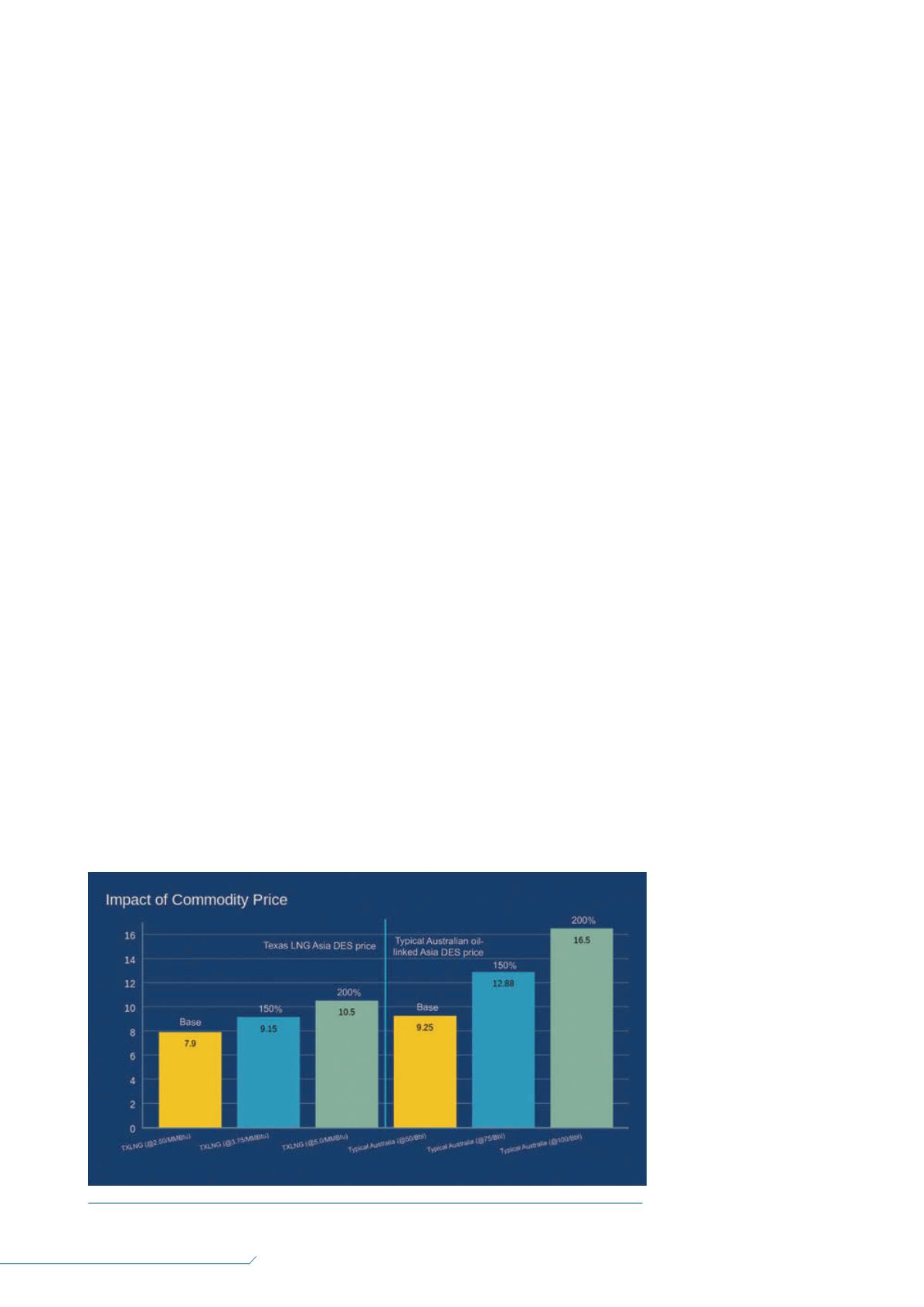
54
LNG
INDUSTRY
MARCH
2016
Texas LNG is focusing on LNG consumers that are seeking
price index diversification, exposure to US gas prices, and
mid scale volumes under simple and transparent flexible
tolling agreements. Technical risk is minimised by leveraging
partners, such as Samsung Engineering, Braemar Engineering,
Air Products and Honeywell UOP. Financial advisory is
provided by BNP Paribas, ensuring that tolling agreements
are bankable and economic assumptions are realistic.
Texas LNG has secured a 625 acre deepwater site along
the deepwater Brownsville ship channel within the
Port of Brownsville in southern Texas. This site is one of the
closest sites to the Panama Canal. Emerging and established
LNG markets in Europe and South America, as well as
developing Caribbean and Central American markets, are
within easy reach. With the imminent opening of the widened
Panama Canal and reduced LNG shipping costs, exports to
Asia are also being pursued by Texas LNG.
Over 200 000 man hours of pre front-end engineering
and design (pre-FEED) and FEED engineering have been
invested in the development of the project. Work has been
completed in Houston (Texas) and in South Korea. The plant
will be built using efficient modules constructed off-site and
transported to location to minimise local construction risks.
The low risk, robust Air Products’ C3MR liquefaction process
has been chosen due to its simplicity and long-term safety
and performance record. Efforts to optimise CAPEX and to
define detailed engineering in preparation for the Final
Investment Decision (FID) in 2017 are ongoing.
The Texas LNG team, with its technical, environmental
and legal partners, including ERM (previously NRG),
K&L Gates, Greenberg Traurig and Royston Razor, submitted
all Federal Energy Regulatory Commission (FERC) pre-filing
resource reports in late 2015. Following review of the draft
documents and a series of expected information requests
from the FERC, Texas LNG anticipates grant of filing status
and submission of its formal application during 2Q16.
Submission of the draft resource reports is an important
milestone in the company’s plan to receive the permits and
approvals to commence construction of its LNG export facility
in 2017.
Focus on cost control
The project has had, and will continue to have, a focus on
reducing costs and improving efficiencies for the benefit
of the LNG offtakers. With minimal overhead costs, a
streamlined management structure, and a commitment to
reduce waste and overruns, Texas LNG is targeting a cost per
tonne of approximately US$650 – US$700, placing it within
the top quartile of US Gulf Coast projects. Cost savings will
flow directly to the tolling fees to be charged to the offtake
customers in a transparent manner. This is a dramatic change
from the traditional opaque relationship between LNG project
developer and customer.
Texas LNG’s business model is to operate on a tolling fee
basis. LNG offtakers will buy natural gas from US gas
suppliers and will have the gas delivered to the liquefaction
plant by pipeline. Texas LNG will liquefy these volumes of
natural gas and will make the product available to the
offtakers at the jetty, ready for export. It will charge the
offtakers a liquefaction charge for the liquefaction services
and the offtakers will pay a capacity fee to reserve
liquefaction capacity in the Texas LNG terminal, as well as an
energy retainage cost to compensate for electricity costs
used by the plant. There will be no destination restrictions on
the product. The tolling fee model allows for more flexibility
than the traditional integrated LNG value chain, which
connected the wellhead to the end-user under rigid,
long-term contracts. The tolling model is attractive for
customers with significant fluctuation in offtake volume.
Assuming that US feed gas is priced at
US$2.50/million Btu, Texas LNG expects to be able to ship
LNG on a Free On Board (FOB) basis from Brownsville at
US$5.80/million Btu plus energy retainage cost. This
estimated price would consist of the feed gas price at
US$2.50/million Btu, a pipeline tariff of US$0.30/million Btu,
capacity fees of US$2.80/million Btu and a liquefaction
charge of US$0.20/million Btu. With the shipping cost to
Europe estimated to be approximately US$1.10/million Btu,
deliveries to Europe could be made at US$6.90/million Btu.
Similarly, deliveries in Asia would be at a price of
US$7.90/million Btu. It is important to note that the US feed
gas price is currently less
than US$2.00/million Btu
and the company continues
to evaluate further cost
saving initiatives.
Current Asian spot prices
are less than Texas LNG’s
delivered cost. However,
LNG buyers are seeking to
diversify their pricing index
away from oil-linked prices.
If oil prices rise (as they will
at some point in the next
20 years), linked LNG price
contracts will rise
proportionally. By contrast,
because of the large gas
surplus in the US, many
analysts expect US gas
prices to stay below
US$3.00/million Btu in the
Figure 1.
Impact of commodity price.


